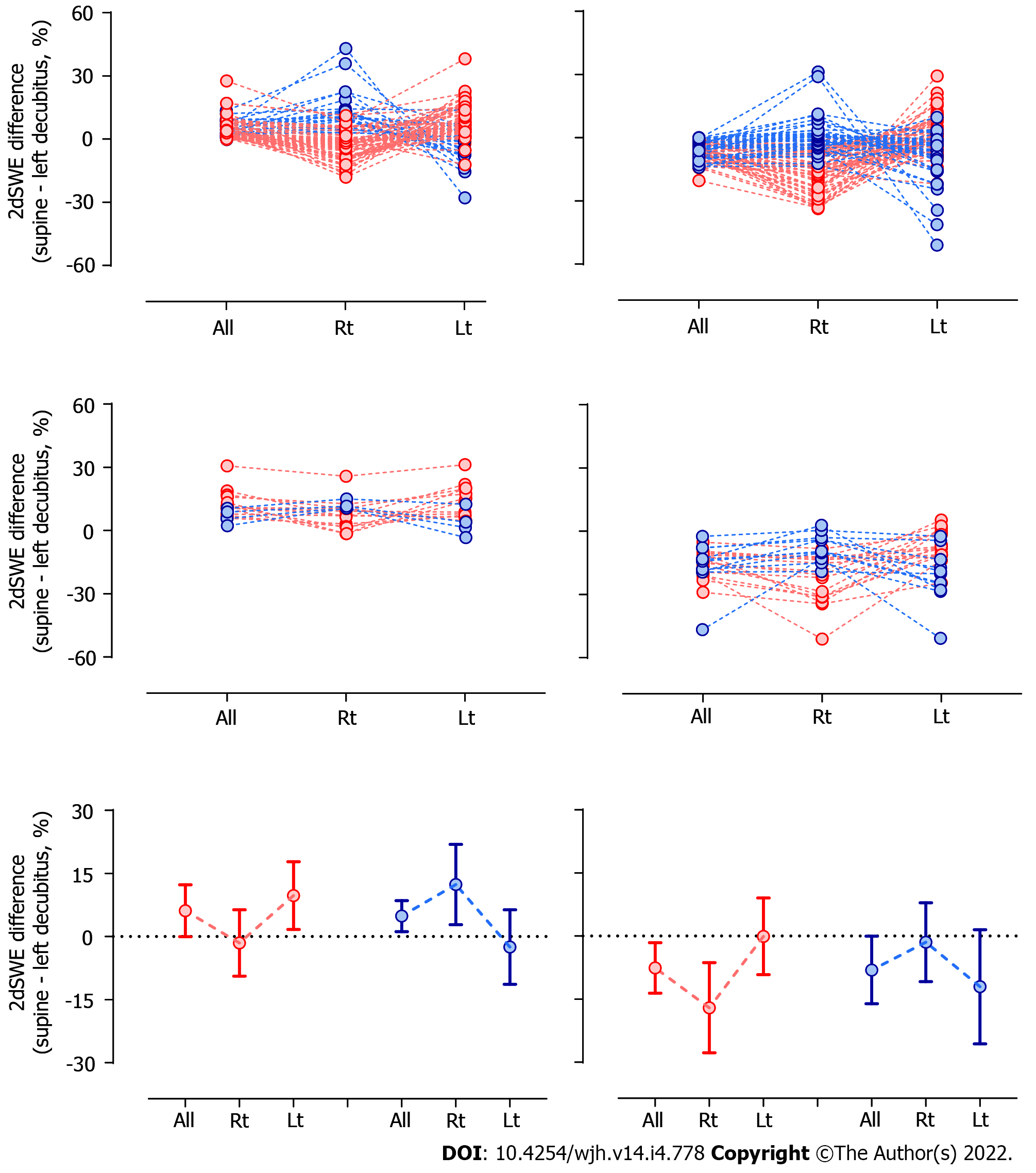Copyright
©The Author(s) 2022.
World J Hepatol. Apr 27, 2022; 14(4): 778-790
Published online Apr 27, 2022. doi: 10.4254/wjh.v14.i4.778
Published online Apr 27, 2022. doi: 10.4254/wjh.v14.i4.778
Figure 3 Reciprocal variation in liver stiffness difference between lobes.
In both cases, with positive (left column) or negative (right column) differences of two-dimensional shear wave elastography (2dSWE) values between two body positions in the entire liver (All), the difference varies less (positive: -1.52 ± 7.91 m/sec, negative: -17.04 ± 10.71 m/sec) or more (positive: 12.38 ± 9.55 m/sec, negative: -1.46 ± 9.39 m/sec) in the right lobe compared with the entire liver (red or blue, respectively, positive: 6.13 ± 6.18 m/sec, negative: -7.57 ± 5.98 m/sec) and reciprocally more (positive: 9.74 ± 8.03 m/sec, negative: -0.08 ± 9.11 m/sec) and less (positive: -2.51 ± 8.85 m/sec, negative: -12.05 ± 13.56 m/sec) in the left lobe compared with the entire liver (positive: 4.86 ± 3.68 m/sec, negative: -8.06 ± 8.02 m/sec). The upper and middle panels represent cases where the difference in 2dSWE for the entire liver is within or beyond the magnitude of robust coefficient of variation, respectively. In the bottom panel, the results in the upper and middle panels are combined. The circle and horizontal bars in each plot indicate the average and standard deviation, respectively. Lt: Left lobe; Rt: Right lobe; 2dSWE: Two-dimensional shear wave elastography.
- Citation: Suda T, Sugimoto A, Kanefuji T, Abe A, Yokoo T, Hoshi T, Abe S, Morita S, Yagi K, Takahashi M, Terai S. Gravity assistance enables liver stiffness measurements to detect liver fibrosis under congestive circumstances. World J Hepatol 2022; 14(4): 778-790
- URL: https://www.wjgnet.com/1948-5182/full/v14/i4/778.htm
- DOI: https://dx.doi.org/10.4254/wjh.v14.i4.778









